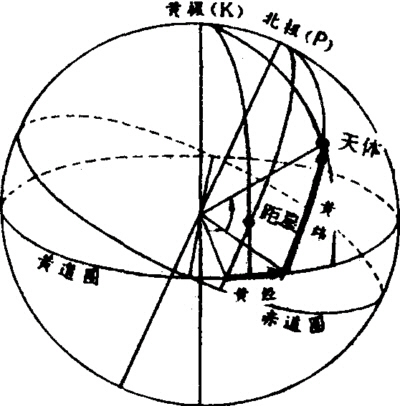Chapter 7 Section 3 Ecliptic Coordinate System
In addition to rising from the east and setting in the west, the sun also moves about 1° eastward on the background of stars, so it moves almost once a year. The annual apparent motion orbit of the sun on the celestial sphere is called the ecliptic.The ecliptic and the equator are not on the same plane, but roughly obliquely forming an included angle of 23.5°.The ecliptic coordinate system takes the ecliptic as the basic circle, and the positions of celestial bodies can be expressed by the two coordinate components of celestial longitude and celestial latitude.
The concept of celestial longitude in the Chinese ecliptic coordinate system is different from that in modern astronomy: the starting point of Chinese celestial longitude is the twenty-eight constellations from the star rather than the vernal equinox, and the celestial longitude value refers to the difference in right ascension between it and the distance from the star. The projection on the ecliptic, so strictly speaking, it is more appropriate to call this quantity "like Huang Jing".
Matching with "Si Huang Jing", there is also a "Si Huang Wei". "Similar yellow latitude" refers to the angular distance from the celestial body to the ecliptic along the right ascension circle (see Figure 4).When measuring, the ecliptic is taken as the starting point. If the celestial body is in the north of the ecliptic, it is called a certain degree inside the ecliptic, and if it is in the south of the ecliptic, it is called a certain degree outside the ecliptic.

Figure 4 Ecliptic coordinate system
The ecliptic coordinate system readily represents the motion of the sun.Although the orbits of the moon and planets do not coincide with the ecliptic, the intersecting angles are very small, so the movements of the three are expressed in ecliptic coordinates rather than equatorial coordinates.
Due to the rotation of the earth, all celestial bodies participate in diurnal apparent motion, and their motion trajectories are parallel to the celestial equator. Therefore, under normal circumstances, ancient China preferred to use the equatorial coordinate system.

Figure 4 Ecliptic coordinate system
